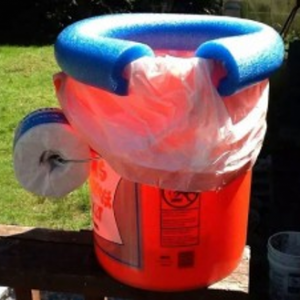Next to ensuring your family’s safety and well-being during a hurricane, having a game plan to protect your largest investment – your home and property – is essential in preparing for a major storm or other disaster. Many of these tasks can be done as part of routine home maintenance well before a storm is on the horizon.
Let’s start with the outside:
- Trim back limbs and branches hanging over the roof and any dead limbs elsewhere in the yard. These can break off in high winds, causing roof and siding damage.
- Clean valleys, gutters, and downspouts of leaves and debris. This will improve water flow off the roof, reducing the risk of leaks.
- If a storm is approaching, move trash cans, lawn furniture, grills, decorative items, potted plants, and toys to the garage, shed, or other secure storage area. These items can become flying missiles in high winds!
- Protect windows with plywood or roll-down shutters. These protective barriers can:
- keep wind pressure from building up inside, leading to roof loss
- reduce the chance of glass breakage
- reduce the risk of wind-driven rain damaging your home’s interior
- Be sure to install plywood before wind speeds increase!
- Do NOT apply tape to windows. Tape will not protect against breakage from flying debris and wastes time and resources. Plus, the adhesive can be very difficult to remove from the glass.
- Protect the garage door with vertical bracing. You can install wooden columns or purchase a kit. For more information, check out Protecting and Securing Garage Doors.
- Check doors, windows, and walls for openings where water can enter. Use silicone caulk to seal any gaps, cracks, or holes – pay special attention to cable and pipe openings into the house.
- Test and service your back-up generator to make sure it’s working properly and check your fuel supply. To prevent carbon monoxide poisoning, use your generator only outside and at least 20 feet away from doors, windows, and vents.
- Mow the yard. This makes post-storm clean-up much easier.
Now, we’ll move inside:
- Check your flashlights and stock up on batteries as needed. Plan on a flashlight for every person in the house plus additional lighting for bedrooms, bathrooms, and common areas.
- Check your weather radio to ensure it’s working properly.
- Check smoke detector and carbon monoxide alarm batteries and replace as needed. Hard-wired alarm systems will operate on the battery backup during a power outage.
- Keep your cell phone and other devices charged when a storm is forecast. Purchase backup charging devices for your electronics.
- Gather disinfectant supplies, trash bags, toilet paper, paper towels, paper plates, cups, and plastic utensils. Put these items in a waterproof/water resistant container to keep them clean and (hopefully) dry in case of flooding.
- If you might be unable to flush the toilet during/after the storm, place a heavy-duty contractor trash bag in the toilet bowl to hold waste. Tie with a plastic tie and dispose of when full or as needed. Another option is to place the bag in a five-gallon plastic bucket. For added comfort, slit a foam pool noodle on one side and slip over the bucket edge for a “seat”; cut to fit. You can have two buckets – one for liquid waste and the other for solids.
- Before the storm arrives, wash dishes, catch up on laundry, clean the kitchen and bathrooms, and empty wastebaskets. This reduces clutter and promotes a clean environment in which to ride out the storm. It also reduces extra work and stress after the storm when water and electricity may be limited or unavailable.
For additional preparation tips, visit Homeowner’s Handbook to Prepare for Natural Disasters
Sources:
Ready.gov
DisasterSafety.org
Latest posts by Judy Corbus (see all)
- Check Your Coverage While the Sun is Shining - July 3, 2025
- Clean Up with Homemade Cleaners - April 28, 2025
- 5 Ways to Cool Your Power Bill - August 28, 2024


